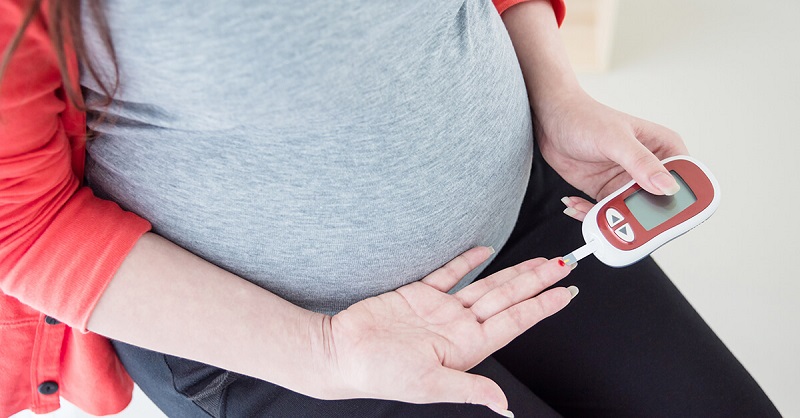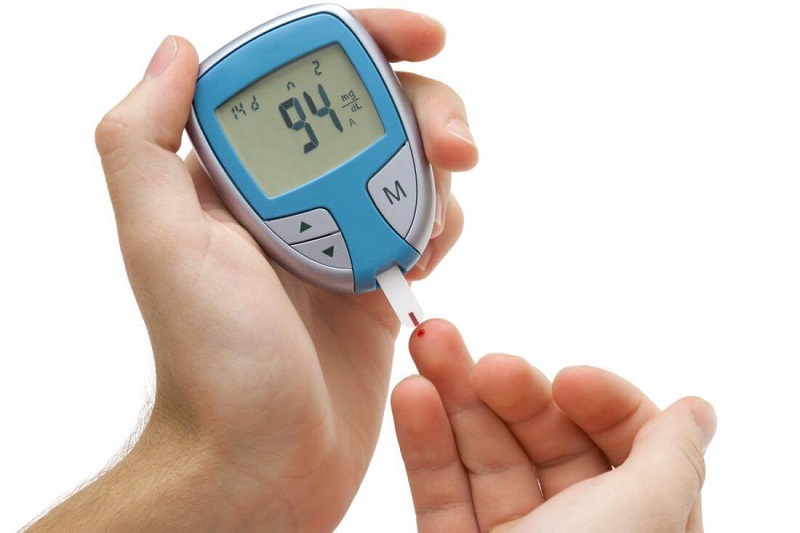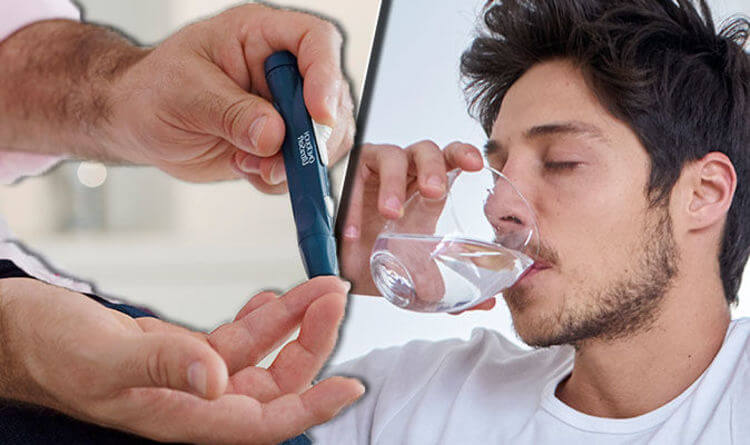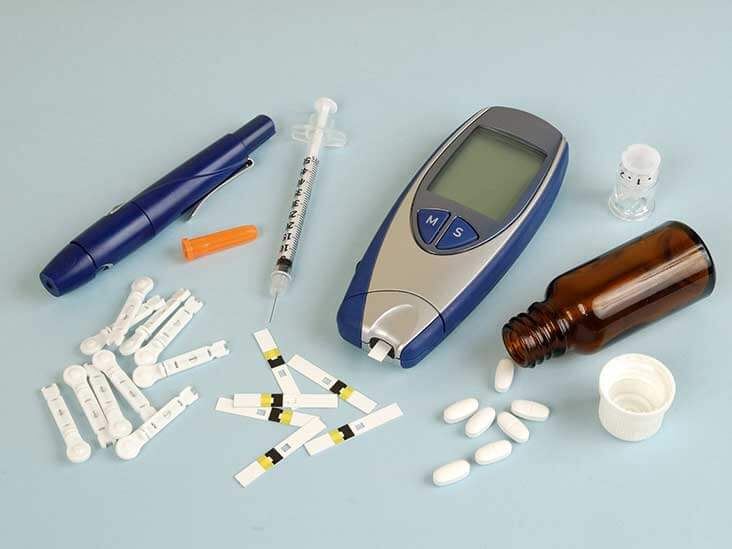Many people think that pre-diabetes is just a temporary disorder that will go away on its own over time. But this is a completely flawed perception.
A poorly controlled diet leads to harmful substances finding their way into the body, which will increase blood sugar levels and can result in pre-diabetes. If you go on to develop type 2 diabetes, it will be difficult to treat, and your health will be severely affected.
What Is Pre-Diabetes?
When the level of glucose (blood sugar) rises above normal but is not high enough to cause diabetes, it is called pre-diabetes, or in other words, a blood sugar disorder.
After fasting for at least 8 hours, blood glucose levels will normally only fluctuate in the 70-100 mg/dL range. But when impaired glucose tolerance causes fasting blood sugar to rise, the pre-diabetic glycemic index will be higher than 126 mg/dL.

It can be understood that pre-diabetes lies in the mid-stage, exceeds the normal body threshold, but has not yet reached the stage of being identified as diabetes.
Many people think that pre-diabetes is not a disease, so there is nothing to worry about. But actually, pre-diabetes is still capable of damaging the heart and circulatory system while also causing a hardening of the arteries.
Causes of Pre-Diabetes
Until now, medical studies have not found the exact cause of pre-diabetes.
One of the major risk factors for prediabetes is genetics, with another common factor being excess fat accumulation.
The mechanism of prediabetes is due to abnormal problems with genes responsible for controlling insulin, leading to insufficient insulin production through the diet or the inability of the body to absorb insulin. This causes the concentration of sugar to accumulate and rise in the blood.
What Are The Symptoms of Pre-Diabetes?
Pre-diabetes is a disorder that happens silently and has no specific symptoms, so it is difficult to detect. Only when testing for pre-diabetes, can we detect it.
The main testing method is a fasting glucose test. You will be given a drink of sugar water, and after waiting 2 hours, you will be re-measured.
If the glycemic index is below 11 mmol/l but higher than 6.9 mmol/l, then you have pre-diabetes. Even higher than 11 mmol/l indicates that you have diabetes.

Although in most cases there are no specific symptoms, there are some signs that, if detected, should be followed by a blood glucose test. They are as follows:
- Frequent nausea and urine output more than normal.
- There is a feeling of constant thirst.
- Blurred vision.
- Fatigue, distraction.
One of the most common signs people should pay special attention to is a change in skin color. For people with prediabetes, the skin color tends to be darker than normal and can be seen most clearly in the neck, knees, underarms, elbows, and finger joints.
Who Is at Risk for Pre-Diabetes?

You will have a higher risk of pre-diabetes if you are in the following risk groups:
Genetic factors: There is a history of family members having diabetes.
- Have an unhealthy, sedentary lifestyle, with little or no exercise.
Age: People aged 45 and over are at high risk of pre-diabetes.
- BMI (body weight index)> 25 kg/m2.
- Have gestational diabetes, and give birth to a baby weighing more than 4kg.
- People with high blood pressure have a higher risk of prediabetes than others.
- Have an irregular menstrual cycle and polycystic ovaries.
- Subjects are overweight or obese.
- Have high cholesterol in the blood.
- Patients with previous lipid disorders such as increased triglycerides or decreased HDL cholesterol.
When to test for diabetes? If you are in a high-risk group for prediabetes and present with symptoms such as abnormal urination, feeling tired or especially darker-than-normal skin, you should go to a hospital or clinic for diabetes tests to be checked and treated early to avoid the risk of serious health effects which make treatment difficult.
Criteria for Diagnosis of Pre-Diabetes
Criteria for diagnosis of pre-diabetes are often applied through two methods: fasting glycemic index and oral glucose tolerance test.
Fasting glycemic index
Fasting glycemic index is a method of taking blood samples from patients to measure their glycemic index when hungry.
For the most accurate results that force fasting for at least 8 hours, it is generally best to have a glycemic index in the morning.

In addition to fasting, the amount of water in the body also needs to be controlled prior to the test. Patients should only drink limited amounts of water and tea with no sugar.
Usually, in a routine checkup, measuring fasting glucose is also one of the basic tests.
OGTT oral glucose tolerance test
If doctors suspect that the patient has pre-diabetes or diabetes, an Oral glucose tolerance test (OGTT) will be ordered to make a diagnosis. However, this test is not usually included in the general examination category.
To perform the OGTT test, patients have to fast for more than 10 hours, usually from after dinner the night before to the next morning.
During the 3 days prior to the test, patients should eat a carbohydrate-rich diet of starchy foods, including rice, pho, cereals, vegetables, and fruit.
At an appropriate time, the patient will receive a blood sample while hungry. Next, they will have to drink 75g-100g of anhydrous glucose in about 200ml of filtered water. After waiting for 1 hour, they will take another blood sample and the third after 2 hours.

The oral glucose tolerance test checks whether or not the sugar level rises after a meal, and then if the blood sugar level remains high or low.
This test is also a method that can diagnose and detect patients with latent diabetes.
Where are Diabetes Tests Available?
Currently, there are many public and private hospitals that test for diabetes. You can choose places that are close to you for the convenience of getting around. Each hospital will have different equipment for diagnosis, which will affect the turnaround time for results.
However, if you still have a lot of questions about what to note before the test, require more counselling, or are unsure how you can make an appointment. You can also call Diag’s hotline 19001717 – a reputable medical diagnostic center for the most specific advice and answers.
Treatment of Pre-Diabetes
When receiving test results to diagnose patients with pre-diabetes, many people worry and ask the question if pre-diabetes can be cured.

Pre-diabetes is treated and controlled to prevent the risk of developing type 2 diabetes by changing lifestyle habits alongside a healthy and scientific diet.
To do this, the patient needs to do the following:
- Have a reasonable diet, add lots of green vegetables and healthy foods, and stay away from fast foods and foods that are too sweet for a long time.
Weight loss is an effective method to help stabilize blood glucose. Specifically, you should lose about 10% of your weight by increasing exercise and nutrition for a significant improvement.
- Should take 30 minutes a day to be active and regularly work out about 3-4 times a week with healthy exercises, or playing badminton, jogging, or swimming, whatever is suitable for your condition and health situation.
Limit the use of stimulants, especially cigarettes.
- Control and treat high blood pressure and cholesterol intake.
- Follow the treatment regimen and the doctor’s opinion about diet and exercise. Should use the drug as directed and follow up periodically according to an appointment.
Pre-diabetes is the stage before diabetes develops. At this stage, if the patient can make positive lifestyle changes combined with a reasonable diet, it will help control blood sugar well.

If you are not active in the treatment of pre-diabetes until the onset of diabetes, it will cause serious health effects and risks leading to complications.
For more information about checkup packages and direct billing services for corporations with health insurance, please click here.
The site cannot and does not contain medical advice. The medical information is provided for general informational and educational purposes only and is not a substitute for professional advice. Accordingly, before taking any actions based on such information, we encourage you to consult with the appropriate professionals.

 1900 1717
1900 1717 